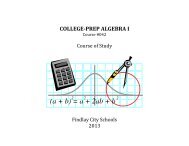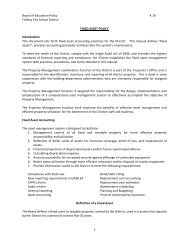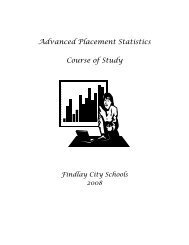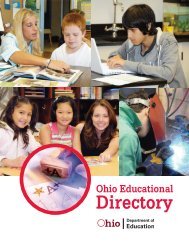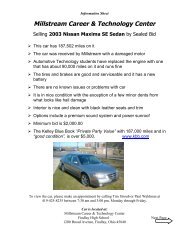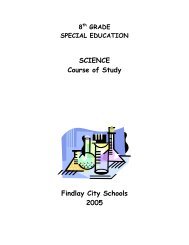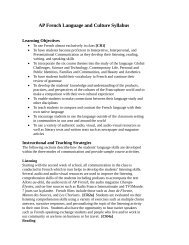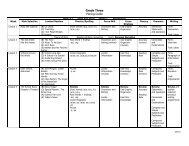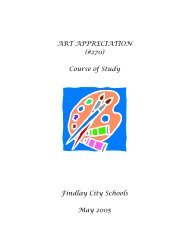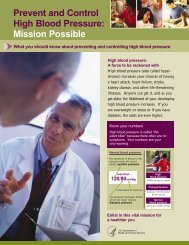Course of Study - Findlay City Schools
Course of Study - Findlay City Schools
Course of Study - Findlay City Schools
You also want an ePaper? Increase the reach of your titles
YUMPU automatically turns print PDFs into web optimized ePapers that Google loves.
Phlebotomist Specialization<br />
Unit 7:<br />
BIL:<br />
EDU:<br />
Phlebotomist<br />
Essential<br />
12 AD<br />
P<br />
R<br />
Competency 7.1: Identify the phlebotomist’s role as a member <strong>of</strong> a health care team.<br />
Descriptors:<br />
7.1.1 Recognize the roles and qualifications <strong>of</strong> the phlebotomist.<br />
7.1.2 Identify the pr<strong>of</strong>essional associations related to the phlebotomist pr<strong>of</strong>ession.<br />
7.1.3 Identify education and training required to work as a phlebotomist.<br />
7.1.4 Describe the organizational structure <strong>of</strong> the clinical laboratory department.<br />
7.1.5 Define the phlebotomist’s role in collecting and/or transporting specimens to the lab.<br />
BIL:<br />
EDU:<br />
Essential<br />
12 AD<br />
P<br />
R<br />
Competency 7.2: Demonstrate specimen collection and specimen integrity in the delivery <strong>of</strong><br />
patient care.<br />
Descriptors:<br />
7.2.1 List the general criteria for suitability <strong>of</strong> a specimen for analysis and reasons for<br />
specimen rejection or recollection.<br />
7.2.2 Explain the importance <strong>of</strong> timed, fasting and stat specimens, as related to specimen<br />
integrity and patient care.<br />
7.2.3 Explain the reasons for processing procedures.<br />
7.2.4 Implement corrective quality control techniques where indicated.<br />
BIL:<br />
EDU:<br />
Essential<br />
12 AD<br />
P<br />
R<br />
Competency 7.3: Identify blood collection supplies/equipment.<br />
Descriptors:<br />
7.3.1 List the types <strong>of</strong> laboratory procedures performed in the various sections <strong>of</strong> the clinical<br />
laboratory department.<br />
7.3.2 Describe the types <strong>of</strong> patient specimens that are analyzed in the clinical laboratory (e.g.,<br />
routine blood tests <strong>of</strong> newborn and adult).<br />
7.3.3 Differentiate tube stopper colors.<br />
7.3.4 Identify tube additives and their actions.<br />
7.3.5 List the supplies that should be carried on a phlebotomist’s tray when collecting micro<br />
specimens.<br />
7.3.6 Maintain collection equipment.



